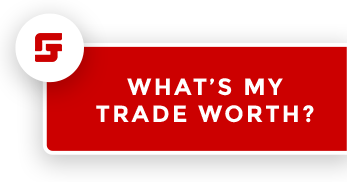Compare Financing VS. Leasing at Davis GMC Buick
Davis Blog
Jan 27th, 2014
Financing VS. Leasing
Advantages of Buying
Generally, purchasing is the right choice if you:
- Plan to drive your car for more than just a few years
- Want the freedom to drive more than 24,000 kilometres a year
- Plan to alter the vehicle’s appearance
- Just feel more comfortable with the idea of owning your own car
Buying means you pay the full purchase price plus taxes up-front. Unless you are fortunate enough to have a lot of cash, you will probably need to get financing. Most banks, trust companies and automotive financing companies offer traditional financing to qualified individuals.
How Financing Works
With traditional financing, your up-front costs will likely include a down payment, registration fees and other charges (such as licensing).
After that, your monthly payments are based on the amount you need to finance, plus interest, over a set period of time. Monthly payments are usually higher than lease payments because – unless you have a substantial down payment – you’re paying for the full purchase price of the vehicle (plus interest).
Financing Fine Points
Your finance contract will probably specify how much insurance coverage you must carry. Otherwise, maintenance, the distance you drive and how well you care for your vehicle will be up to you. Once your payment period ends, you will own your car outright. You can then choose to keep it, sell it or trade it in for a new vehicle.
One nice feature about financing is that you can get loan pre-approval from your lender before you go car-shopping. This means you’ll know in advance how much you can spend and what your monthly payment will be.
Fixed vs. Variable Interest Rates
When choosing to finance, it’s important to understand the difference between “fixed” and “variable” interest rates. Stripped of all the technicalities, the explanation is quite simple:
- Fixed interest rate – Just like it sounds, your interest rate is set for the full term of your loan. Fixed interest rates are often set higher than variable interest rates (at least initially) but they protect you from market fluctuations.
- Variable interest rate – For those with stronger stomachs, the variable interest rate means that if interest rates drop you benefit; but if they rise, you either pay more or extend your loan term.
Fortunately, many lenders will let you switch between the two without a penalty. Check with yours before you commit yourself.
Visit our Financing section of our website to get started.
Benefits of Leasing
Leasing is a popular method of getting behind the wheel. Some benefits include…
- A low down payment
- A new car more often
- No resale hassles
How Leasing Works
When you buy a car using traditional financing, monthly payments are based on the whole value of the vehicle plus interest. When you lease a car, your payments are based on the portion of the vehicle you expect to use (plus interest) over the lease term. Lease terms are usually 24-48 months.
So, let’s say you want a car that costs $20,000 new, and will be worth about $8,000 after you use it for four years (that $8,000 is called the vehicle’s ‘residual value’). Your payments are based on the difference between these two numbers, which is $12,000 plus interest.
Leasing Fine Points
When you lease a vehicle you do not own the vehicle and therefore it is likely to have certain restrictions. For example, you may be obligated to fulfill certain maintenance requirements. There may be restrictions on how many kilometres per year are included in your leasing package. And you likely cannot modify your car in any way. At the end of term when you return the car, you may also be charged for any excessive wear and tear.
If you still have any Questions or Concerns, come in to Davis, we would be happy to assist you in choosing the right payment method for you and your GMC or Buick vehicle! Contact our Financing Department.
1 (403) 329-4444 | Lethbridge, Alberta



